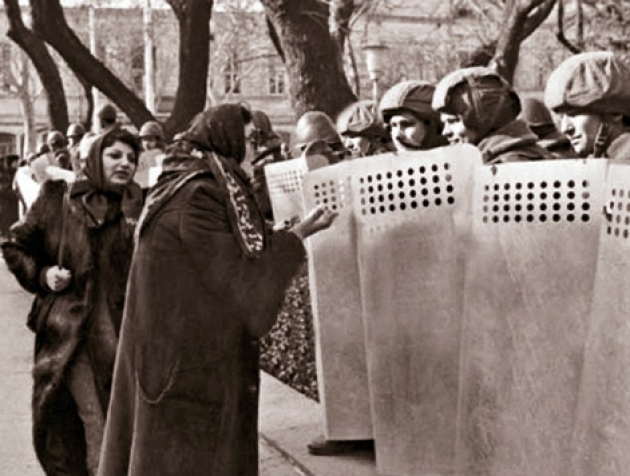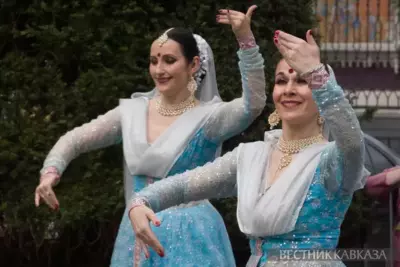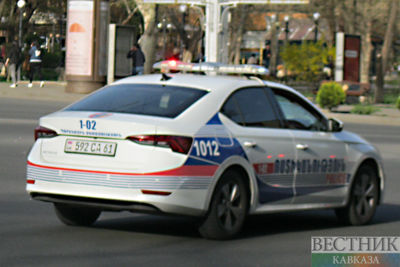“Black January” or “Bloody January” as it is also called in Azerbaijan - marks 30 years on January 20. This date in the republic forever became the Day of National Sorrow. Then, under the tracks of tanks, hundreds of civilians of different nationalities: Azerbaijanis, Russians, Armenians, Jews, Tatars, were killed by automatic bursts fired by servicemen of the Soviet Army. Today we remember the innocent victims. It is unfortunate that materials appeared in the Russian media in which these tragic events are presented rather one-sidedly: purely in the light of the Armenian-Azerbaijani conflict because of the territorial affiliation of Nagorno-Karabakh, Polit.ru writes.
The forerunner of the tragic events in Baku was the so-called Sumgait pogrom, which occurred two years earlier in February 1988. Since many call it the starting point of a new round of the Azerbaijani-Armenian conflict, it is worth telling in more detail about that tragedy.
In the 1960s, the rapidly developing industrial Sumgait, located in the north of Baku, could well compete for the title of one of the most international cities of the Soviet Union. Representatives of up to 10 different nationalities studied in schools in the same class. The largest population groups of the city were Azerbaijanis, Russians, Armenians and Jews.
An important episode around Nagorno-Karabakh (NKAO) served as a detonator of the conflict. This region with a predominantly Armenian population during the USSR was part of Azerbaijan on the basis of autonomy.
On February 20, 1988, an extraordinary session of the Council of People’s Deputies of the NKAR adopted a decision on a petition to the Supreme Councils of the Azerbaijan SSR and the Armenian SSR for the transfer of the NKAR from the Azerbaijan SSR to the Armenian SSR. At the same time, the session petitioned the Supreme Soviet of the USSR for a positive resolution of the issue. In Azerbaijan, of course, they were categorically against it. But not only there. On February 21, in a resolution of the Politburo of the CPSU Central Committee, this demand was presented as accepted as a result of the actions of "extremists" and "nationalists."
Nevertheless, in Karabakh itself, as well as in Armenia, mainly in the border areas where Azerbaijanis lived compactly, clashes on ethnic grounds occurred. In fact, from that moment, the mass expulsion of Azerbaijanis from Armenia and Armenians from Azerbaijan began.
In the late Soviet era, the terrible word "refugee" was first spoken in Azerbaijan just in 1988, with the advent of escaping Azerbaijanis. The Karabakh conflict was just beginning, but Armenia has already begun to oppress the Azerbaijanis living there since ancient times. The persecution began.
From 1988 to 1989, according to official statistics, 219,776 people moved to Azerbaijan from the neighboring republic. The refugees from Armenia received refugee status without any delay. It should be noted that approximately the same number of Armenians were forced to leave Azerbaijan.
In the winter of 1988, people who called themselves “refugees from Karabakh” began to arrive in peaceful Sumgayit. The situation in the city began to heat up.
The first Sumgayit rally on February 26 was relatively not crowded, the second, organized the next day, was attended by thousands of people, and many arrived on the square as directed by the heads of enterprises and institutions. Eyewitnesses claim that there were different slogans, including for the territorial integrity of the republic. However, some speakers (more on that below) tried to push for illegal actions.
Unfortunately, it succeeded. On February 27 evening, the rally turned into violence, which lasted three days. According to official data from the USSR Prosecutor General’s Office, 26 citizens of Armenian and 6 citizens of Azerbaijani nationality were killed in the riots, more than a hundred people were injured. According to unofficial estimates, the number of deaths was in the hundreds. In addition, during the clean-up operation, injuries of varying severity were received by 276 troops.
The All-Union Prosecutor's Office opened criminal proceedings in 80 episodes. 94 ordinary participants, mainly teenagers and youths, were brought to justice. Akhmed Akhmedov, was sentenced to death.
According to investigative materials, the main organizer of the Sumgayit events was the thrice-convicted felon Eduard Grigoryan, an Armenian by nationality. The investigation revealed that he took an active part in the robberies and personally killed six Armenians.
On the eve of the Sumgayit events, Grigoryan and his brothers maintained close contact with the Armenian emissaries from Nagorno-Karabakh. They compiled a list of addresses of Karabakh Armenians who do not want to recognize Armenian separatism and refuse to transfer money to their funds. On February 27, Grigoryan and K arrived at the square, introducing themselves as “Azerbaijanis from Kafan” (Armenian border region). Grigoryan made a speech in the square, in which he said that in the Kafan district, Armenians massively exterminate the Azerbaijani population, and urged the crowd to take revenge. He shouted: "I have a list of addresses of Armenians, I know where to go." Then he, with his gang of almost 100 people, went to these addresses for
















